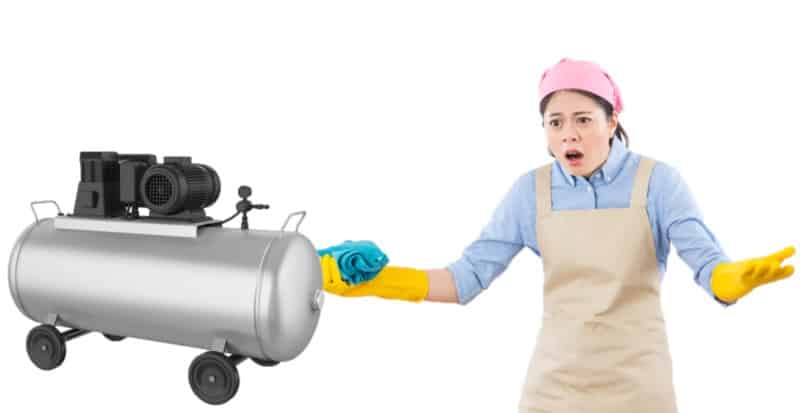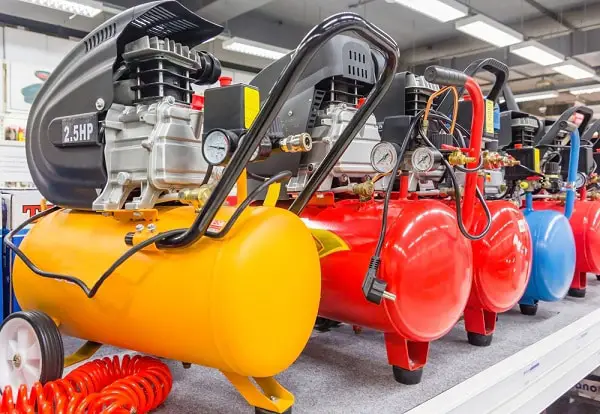
How to Clean Out Your Air Compressor Tank
If you’re like us, your air compressor may be one of your favorite tools in the shed, which means that it is used very frequently, if not several times a day. While most air compressors are built to be durable and generally long-lasting, they are not indestructible and could serve you even better – and for a longer time – if you perform some routine maintenance on them. Sure, quick little touch-ups and cleanups are great, but if you want to ensure the longevity and optimal performance of your air compressor, you’ll need to perform several fundamental maintenance procedures.
One of the most important maintenance procedures you can do on your air compressor is to clean out the tank. Over time, the air compressor tank can become filled with gunk and mess that can eventually clog up your air compressor, causing it to function suboptimally or worse, break on you altogether.
With some “tender” love and care, your air compressor will prove to serve you for many years, providing you with hours upon hours of quality use and operation. Even if it isn’t springtime where you’re at, it’s certainly time to do a little spring cleaning on your air compressor.
To help you get started, we’ve provided a little guidance on air compressor tank cleaning below. Let’s take a look at how to clean out your air compressor tank. Soon enough, you’ll be regularly cleaning your air compressor tank as part of healthy air compressor maintenance.
Step by Step
- First of all, check for oil and fluid leaks that may be present. You can check for oil by searching for leaks and you can often hear air leaks rather than see them. If you see any leaks, take care of these first and foremost.
- Next, it’s time to give your air compressor tank a good cleaning. The thing is, as you use your air compressor more, it grabs air from the local environment which could be filled with water vapors. Over time and with use, the water vapor builds up in the compressor tank, causing a deficiency in the amount of air your tank can compress at a time.
- To clean your air compressor tank, first, place your air compressor in its normal positioning. Then, grab the ring that’s located on the tank drain. Once you’ve done this, slowly open the drain valve until it’s fully open.
- Now that you’ve gotten things in place as it needs to be, it’s time to finally drain the air compressor tank. Be sure that as you drain out the tank (through the drain valve), you empty out the tank of all its contents. Along with water condensation, you might find that oil, sludge, and rust. Once you’ve drained the tank completely, keep the tank’s drain valve open for a few hours – this will make sure that the remaining liquids dry out. Just make sure that there is no nearby debris that could end up in the tank.
- Now that you’ve cleaned the air compressor tank, the last thing to do is to close up your tank. Do this by completely closing the drain valve and making sure that it’s sealed securely and tightly.
Related Video:
https://www.youtube.com/watch?v=O0uYpuCYFwg&t=62s

